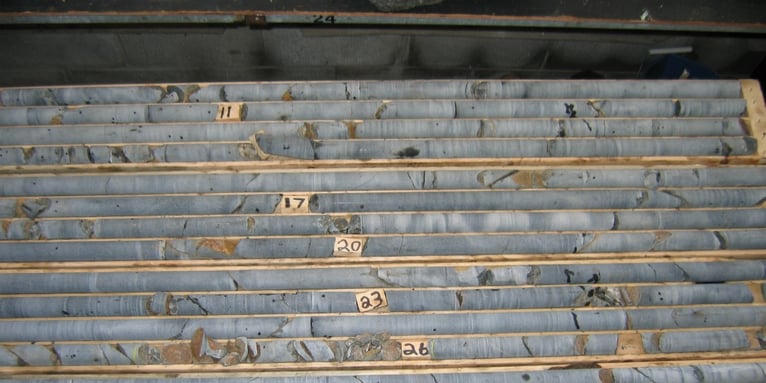 When we help our clients plan drilling programs one of the first things we do is assist the client with preparing a tender document that we typically send to at least three drilling companies. Prices vary greatly and the cheapest offer is not always the best deal for our client. We evaluate the proposals we receive from the drillers to ensure our clients get what they need. We make sure that we select a drill rig that is fit for the purpose; for example, we would not require a rig with a capacity to drill 2,000 m deep holes for a program that consist of drill holes of a depth of up to 200 m. In such a case, we would rather choose a lighter rig with a smaller environmental footprint.
When we help our clients plan drilling programs one of the first things we do is assist the client with preparing a tender document that we typically send to at least three drilling companies. Prices vary greatly and the cheapest offer is not always the best deal for our client. We evaluate the proposals we receive from the drillers to ensure our clients get what they need. We make sure that we select a drill rig that is fit for the purpose; for example, we would not require a rig with a capacity to drill 2,000 m deep holes for a program that consist of drill holes of a depth of up to 200 m. In such a case, we would rather choose a lighter rig with a smaller environmental footprint.
At the same time as we prepare the tender we confirm with our clients that:
- all permits are in place
- the local First Nations have been informed of the upcoming program
- the surface rights owners have been informed
We then help choose an assay laboratory and an appropriate analytical technique for the drill core analysis – ideally the selected analytical technique is accredited to the standards of the International Organization for Standardization (ISO) 17025 or another international or national organization at the selected laboratory. We also help plan a quality control/quality insurance (QA/QC) program. We assist our clients with choosing appropriate blanks and low-, medium- and high-grade standards by selecting standards that are certified for the same analytical technique that the client has chosen for the samples. Ideally, the matrix of the sample is similar to the standard matrix.
Often, clients have their own core shed or logging facility with suitable logging tables, water supply, and in particular with good lighting, so that the core can be logged well and efficiently. If our clients do not have their own facility, we help them custom-build one. Core logging is such an important part of exploration. Each drilling program is different. We typically log:
- rock type
- alteration
- structure
- mineralization
- type: vein, disseminated, massive, etc.
- percentage
- type of ore mineral
- rock quality designation (RQD)
- sample intervals
But, other parameters are also recorded depending on the specific needs of the drilling program. For example, in some cases specific gravity (SG) is measured on selected samples in the core shack or the client may have portable XRF or spectral devices. Such information is also recorded in the logs. The loggers will select intervals for sampling and each sample will receive a number based on pre-numbered sample tags. The core is also photographed: we always take photos of wet and dry core because some features are better visible when the core is dry whereas other are easier to see on a wet surface. The core photos will show the sample tags.
After we finish logging each hole, we bring it into 3D immediately so we can determine the significance of what we logged in the context of other drill holes. This also allows us to plan the following holes or adjust planned holes.
After cutting the core in half and collecting the drill core samples, we ship the samples to the laboratory. We typically encourage our clients to get SG measurements even if they are not planning on completing a resource estimate at that stage. Ideally, drill hole data are used for resource estimation at some point and knowing the range of SG values is essential at that time.
Most clients have a dry, well organized, and secure core storage facility, to ensure the core is available and accessible in the future. Clients often go back to their core after they have received the assay results and resample some intervals or need the core for other tests, including metallurgical testing.
As soon as the assay lab provides us with the analytical results we complete a quality control analysis to ensure that no contamination occurred at any stage during the sample preparation, that the analytical instruments were well calibrated, that samples were not mixed up or that any other irregularity occurred. If the assay data pass the quality control test, they are incorporated in the 3D model and interpreted.
A drilling program requires a lot of planning, organizing and managing before, during and after the program. Our clients know that the logging results are a key component of their exploration program. We work with our clients to achieve the best results.





